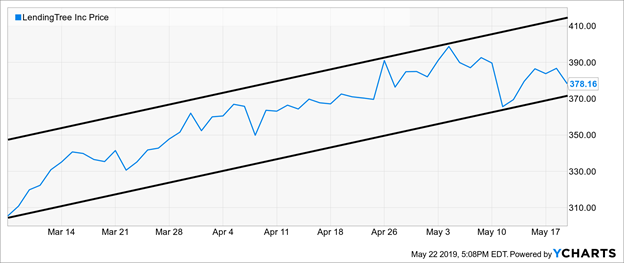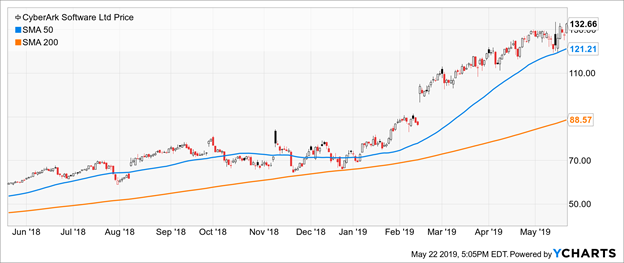The Stock Exchange is all about trading. Each week, we do the following:
- discuss an important issue for traders;
- highlight several technical trading methods, including current ideas;
- feature advice from top traders and writers; and
- provide a few (minority) reactions from fundamental analysts.
We also have some fun. We welcome comments, links, and ideas to help us improve this resource for traders. If you have some ideas, please join in!
Review: Do You Trade News Cycles or Market Cycles?
Our previous Stock Exchange asked if you Trade the News Cycle or the Market Cycle? We described how the media pundits conveniently create news stories that perfectly fit the moves in the market, but asked if these news cycle are tradable or even accurate.
This Week: Have You Thrown In The Towel at Exactly the Wrong Time?
Despite mountains of evidence highlighting the mistake, market participants (ranging from retail novices to institutional pros) continue to enter and exit their strategies at exactly the wrong time. For example, they chase returns and buy at the top, and also bail and sell at exactly the wrong time too. This week, we get into more detail on the specifics of several of our trading strategies, and we also discuss the continuing confidence we have in our models and our process.
But first, some noteworthy recent articles on this topic to give you more perspective on what we’re talking about. For example…
- The Folly of Hiring Winners and Firing Losers
- Why Bad Things Happen to Good Decisions (the table is really good in this one).
- Process Over Outcome
- Optimizing the Investment Process
Regarding our own asset allocation and investment/trading process, Vince (the father of our models) recently had the following to say:
“Market behavior is interesting. When I design a trading model, it is a process of capturing the “essence” of a particular behavior that is my goal. The key is to do that in as simple a manner as possible (for those of you familiar with the background math, this is sometime called minimal degrees of freedom) so that the model captures it in a manner that it can use to generalize when presented with future events.
In the process not all situations are captured, which is to be expected. When any model encounters these “uncaptured” situations (e.g. such as highly news-driven events) model performance will suffer. This has been the case lately for most of the models. Their design has been based on a wide range of unfolding events, but not all events could be captured (or should they be, since that would result in model “overfitting” and result in poor generalization during future trading). Therefore model design is a balance good results in training and similar performance in out-of-sample and then real-time trading.
Currently all of the models are displaying trading characteristics fully in line with both past simulated and current real-time observations. While there can never be a guarantee that the models will continue to perform in line with these observations in the future, there is no indication that they are not performing properly at present.”
We’ll have more to say about how we allocate investment dollars among our trading and fundamental strategies later in this report.
Model Performance:
Our trading programs have moved back to normal trading and cash levels, after having been holding higher levels of cash in challenging market conditions around the turn of the year. And, we are sharing the performance of our proprietary trading models, as our readers have requested.

Note that we have changed the timeframe from Tuesday to Monday, to Wednesday to Tuesday, with the goal of more closely matching the release of this weekly report.
And we’ve also included more detail about the process in our trading models below. Further, for more information about our models (and their specific trading processes), click through at the bottom of this post for more information (readers are additionally invited to write to main at newarc dot com for our free, brief description of how we created the Stock Exchange models).
Expert Picks From The Models:
Note: This week’s Stock Exchange report is being moderated by Blue Harbinger, a source for independent investment ideas.
Holmes: This week, I bought shares of Papa John’s (NASDAQ:PZZA). Do you like pizza, Blue Harbinger?

Blue Harbinger: Yes, but I am more interested in understanding why you bought the shares, Holmes. I know you are a dip-buyer, generally speaking.
Vince: As regular readers of this column know, Holmes uses a mean-reversion approach to identify stocks that have moved “abnormally” far from their recent price history. Papa John’s seems to have done that and Holmes identified the additional conditions necessary for purchase which occurred this week. As always, Market conditions may impact this trade, but since these mean-reversion stocks are often at a low recent price point, they are generally less impacted by negative market conditions.
BH: Thanks for that explanation. And how about you, Road Runner–any trades this week?
Road Runner: This week I bought Lending Tree (TREE). As you know, I like to buy stocks in the lower end of a rising channel.

BH: I do know that because you tell me that almost every week, but can you provide a little more color?
Vince: As has been discussed in this column previously, RR looks for a certain type of situation (some call it a pattern, others may call it a setup, etc.) where the probability of a particular action is not a matter of chance (50/50) but has been historically noted to result in a greater tendency towards a particular outcome. “Trending in a channel” is one such situation. An equity will often “cycle” between the upper and lower bounds of that channel for substantial periods of time. RR’s design attempts to take advantage of this property by identifying stocks trending in an upwards channel and waiting until the stock price drifts to the lower bound, making it a candidate for purchase. These types of situations have a relatively high probability of positive outcome with a reasonable profit potential. TREE can be seen to be in this type of a situation. Now I believe that BH will point out that TREE may be in the process of improving its profitability which may be the fuel driving the move, but RR really does not care. This is a short-term trade that has traditional shown profitability when the right conditions have been met. One way or another, RR will be out of it shortly.
BH: Thanks for that explanation. It makes good sense to me, but then why has the performance been week lately?
Jeff: As the portfolio manager, I have a responsibility for all eight of our programs as well as asset allocation. Since the programs have different approaches, there are always leaders and laggards. The question then arises: Should we switch from one approach to another? At the moment our human-managed fundamental programs have done better. But this is not always the case. In making these decisions I emphasize the development process for the system. The results are important, of course, but need a long enough history for a fair assessment.
If a 325 hitter batted 225 for a month, would you trade him? If you had great confidence in his fundamental skills, you would be patient. How much patience? It is a lot longer than people realize. It is measured in the number of decisions, not in time. Vince’s development of the models involved decades of data and tens of thousands of possible decisions. If that was done correctly, and it was, it is more convincing to us than results during a tumultuous and unfavorable environment.
Vince and I have great confidence in these methods, or we would switch. Instead, we both have significant investments. That said, Vince did make a few tweaks in Athena – not to the basic logic, but to the procedure for stops. It is more Holmes-like in finding independent exit criteria.
BH: Thanks for that explanation. And since you mentioned Athena–Athena, do you have any trades to share this week?
Athena: I bought shares of CyberArk Software (CYBR) this week.

BH: Why? Or should I just ask Vince?
Vince: Regular readers of this column will know the Modus Operendi for Athena. She looks for stocks having strong positive trends and then selects only those with the very strongest trends (“king of the hill”), constantly replacing the ones with weaker trends. It should not surprise anyone that Athena is holding CYBR. A quick look at the chart makes the strength of the trend for CyberArk Software obvious. Athena will continue to hold CYBR until either the strength of the trend abates or if a stock with an even higher trend strength comes along. Athena does not have a set “holding period” for a position. She will exit only when either a stronger stock comes along or if market conditions dictate a strong potential for loss – capital preservation remains the key driver in all situations.
BH: Thanks Vince–I really appreciate these explanations you are sharing. And how about you, Felix–anything to share this week?
Felix: I have a ranking to share. This week, I ran the 30 stocks of the Dow through my technical trading model, and my top 20 are ranked in the following list.

BH: I see you like Microsoft (NASDAQ:MSFT) (MSFT). However I am guessing it’s not because Microsoft’s Azure is closing the gap on Amazon (NASDAQ:AMZN) Web Services (AMZN) in terms of cloud based solutions? I know you are a momentum-based technical model. Thank you for sharing.
Conclusion:
Even though he is a long-term investor and not a trader, it’s still applicable and hard to apply in real life when Warren Buffett says to “be greedy when others are fearful, and fearful when others are greedy.” To be specific, it can be painful to buy a stock or invest in a strategy at $80, only to watch it fall in short order to $60. However, that pain is easily eclipsed by the pain of then selling at $60–only to watch it rebound back to $100. We remain very confident in our trading strategies. We’ve invested our own capital and have no intention of bailing at the wrong time. Have you ever made the mistake of throwing in the towel at exactly the wrong time?
Getting Updates:
Readers are welcome to suggest individual stocks and/or ETFs to be added to our model lists. We keep a running list of all securities our readers recommend, and we share the results within this weekly “Stock Exchange” series when feasible. Send your ideas to “etf at newarc dot com.” Also, we will share additional information about the models, including test data, with those interested in investing. Suggestions and comments about this weekly “Stock Exchange” report are welcome. You can also access background information on the “Stock Exchange” here.
